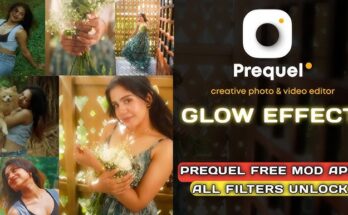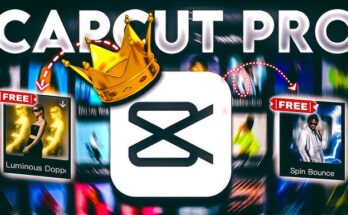Poetry has long been a powerful form of expression, allowing writers to convey deep emotions, thoughts, and stories through words. In today’s digital age, poetry has found a new medium: videos. Combining the lyrical beauty of poetry with visual storytelling and multimedia elements like music and sound effects, poetry videos have become a captivating form of art that resonates with audiences in profound ways.
This guide will take you through the process of creating a poetry video step by step, offering tips, tools, and techniques to transform written words into an immersive visual experience. Whether you’re a poet looking to give your work a new dimension or a video creator interested in this emerging art form, you’ll find everything you need here.
Why Make Poetry Videos?
Before diving into the how-to, it’s important to understand why poetry videos are gaining popularity:
- Enhanced Emotional Impact: Combining visuals, music, and spoken words intensifies the emotions conveyed in a poem.
- Broader Reach: Video content is one of the most popular forms of media on platforms like YouTube, Instagram, and TikTok, providing poets with a larger audience.
- Creative Exploration: Poetry videos allow poets and creators to experiment with different mediums, offering a new way to express themselves.
- Cultural Relevance: With the rise of video-sharing platforms, visual storytelling has become a part of modern culture, and poetry videos align with this trend.
Now, let’s break down the process of creating your own poetry video.
Step 1: Selecting the Right Poem
The first and most crucial step in making a poetry video is choosing the right poem. The poem will serve as the foundation for your video, so it’s important to select one that resonates deeply with you and aligns with the kind of visual story you want to tell.
Things to Consider When Choosing a Poem:
- Theme: What’s the central message or emotion of the poem? Does it focus on love, loss, self-reflection, or hope? Your choice will shape the tone and visuals of your video.
- Length: Shorter poems may be easier to adapt into videos, especially if you’re a beginner. However, longer poems can also work with more elaborate storytelling.
- Narrative Potential: Does the poem lend itself to a visual story? Some poems are abstract, while others paint vivid images that can easily be brought to life through video.
Original Work vs. Published Poetry
You can either use your own original poetry or adapt published poetry. If you choose the latter, make sure to check copyright laws or use public domain poetry to avoid any legal issues.
Step 2: Crafting a Vision for Your Poetry Video
Once you have your poem selected, it’s time to plan how you want to bring it to life visually. This step involves imagining how the words of your poem will translate into images, sounds, and emotions on the screen.
Brainstorming Visual Ideas:
- Metaphors and Symbols: Poems are often rich with metaphors and symbols. How can you visually represent these in your video? For example, if your poem speaks about freedom, you might show birds flying or open landscapes.
- Tone and Atmosphere: Think about the overall mood of your poem. Is it melancholic or hopeful? Dark or light? The tone will influence the color scheme, setting, and camera angles you use.
- Narrative or Abstract: Decide if you want your poetry video to have a clear narrative (a story with a beginning, middle, and end) or be more abstract, relying on imagery and atmosphere rather than a plot.
Creating a Storyboard or Script:
A storyboard can help you visualize the flow of your video, mapping out key scenes and transitions. If you prefer writing, a script with time stamps or scene descriptions can also guide your creative process.
Selecting a Style:
- Minimalist: Simple visuals, often in black and white, with minimal props and background.
- Cinematic: High-quality, film-like visuals that aim to tell a story or evoke a strong emotional response.
- Abstract: More experimental, focusing on abstract shapes, colors, or textures that reflect the feelings behind the poem.
Step 3: Recording the Poetry (Voiceover or On-Camera)
One of the most important elements of a poetry video is the recitation of the poem. You have two main options for presenting the poem: a voiceover or an on-camera reading.
Voiceover:
A voiceover allows you to record your voice separately from the visuals. This can be useful if you want to focus on the visuals while letting the poem be heard in the background.
Tips for Voiceover:
- Use a quality microphone to ensure clear audio. If you don’t have access to professional equipment, a good smartphone microphone will suffice.
- Practice reading the poem several times to ensure that you capture the right emotion and pacing.
- Record in a quiet space to avoid background noise. If necessary, use software to edit out any unwanted sounds.
- Experiment with tone and inflection, paying attention to how the pacing and delivery of each line can enhance the poem’s meaning.
On-Camera Reading:
For an on-camera reading, the poet (you or someone else) will be filmed reciting the poem. This can add a personal, intimate touch to your video and create a direct connection between the speaker and the audience.
Tips for On-Camera Readings:
- Pay attention to lighting and setting. Natural light works well for soft, intimate videos, while studio lighting is ideal for more polished, professional results.
- Practice your body language and facial expressions to match the tone of the poem. This can add an extra emotional layer to the words.
- Use close-ups to focus on facial expressions or pull back for wide shots that include the environment.
Step 4: Filming the Visuals
Filming is the next step in bringing your poetry video to life. The visuals you capture will play a crucial role in setting the tone, enhancing the meaning of your poem, and engaging your audience.
Equipment:
You don’t need expensive equipment to film a poetry video. Here are some options based on your budget:
- Smartphone Camera: Many smartphones today have excellent video capabilities, making them a great option for low-budget projects.
- DSLR Camera: For higher-quality videos, a DSLR camera with good video resolution will produce professional-looking results.
- Tripod: A tripod will help stabilize your shots, ensuring smooth and steady footage.
Key Elements to Consider:
- Framing: Experiment with different camera angles and distances. Close-ups are great for capturing emotions, while wide shots can provide context or atmosphere.
- Lighting: Lighting can dramatically affect the mood of your video. Natural lighting is perfect for a softer look, while artificial lighting can create dramatic contrasts or spotlight certain elements.
- Location: Choose locations that enhance the theme or mood of your poem. Outdoors, you might film in parks, forests, or urban landscapes. Indoors, a simple backdrop or a meaningful space like a room or library can add depth.
- Movement: While static shots are powerful, using smooth camera movements like panning or zooming can add dynamism to your video.
B-Roll Footage:
In addition to the main footage of you (or someone else) reciting the poem, consider capturing B-roll footage. B-roll consists of supplementary visuals, such as nature shots, cityscapes, or abstract elements, that enhance the narrative or mood of your poetry video.
Step 5: Editing the Poetry Video
Editing is where everything comes together, turning raw footage, voiceover, and music into a cohesive poetry video. The editing process allows you to refine your vision and bring depth to your video.
Editing Software:
There are many video editing software options available, depending on your experience level and budget:
- Beginner: iMovie (Mac), Windows Movie Maker (Windows), CapCut (Mobile)
- Intermediate: Adobe Premiere Elements, Filmora
- Advanced: Adobe Premiere Pro, Final Cut Pro, DaVinci Resolve
Key Editing Techniques:
- Syncing Audio and Visuals: If you’re using a voiceover, ensure that the visuals align with the recitation of the poem. Experiment with cutting between footage and adding effects during impactful moments.
- Pacing: The pace of your video should complement the rhythm of the poem. Faster cuts can create energy, while slow transitions can evoke contemplation or emotion.
- Transitions: Simple transitions like fades and cross-dissolves work well for poetry videos, while jarring cuts might disrupt the flow.
- Text on Screen: Adding lines or stanzas of the poem as text on the screen can enhance the viewing experience, allowing your audience to follow along with the words.
- Color Grading: Use color correction or color grading tools to give your video a specific mood. Warmer tones can evoke happiness or nostalgia, while cooler tones might suggest sadness or introspection.
Step 6: Adding Music and Sound Effects
Music and sound effects can amplify the emotions of your poetry video. Choose music that complements the tone and themes of your poem without overpowering the spoken words.
Selecting the Right Music:
- Instrumental Tracks: Lyrics can clash with the spoken word, so it’s best to stick to instrumental music. Classical, ambient, or acoustic tracks work well for poetry videos.
- Royalty-Free Music: If you’re planning to upload your poetry video to YouTube or other public platforms, make sure you’re using royalty-free music to avoid copyright issues. Websites like Epidemic Sound, Artlist, and YouTube’s Audio Library offer a wide


